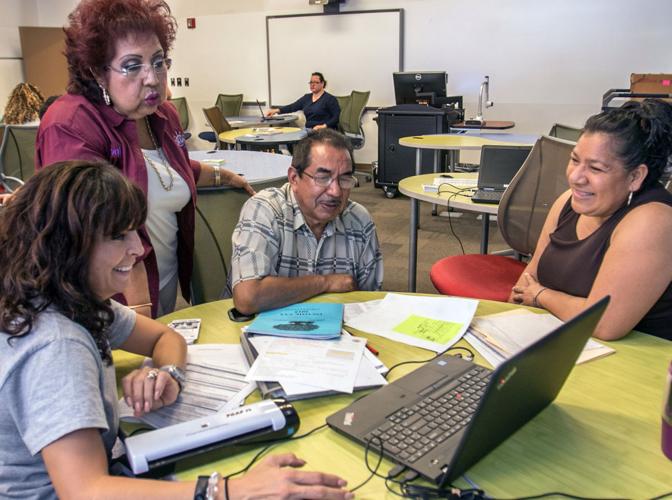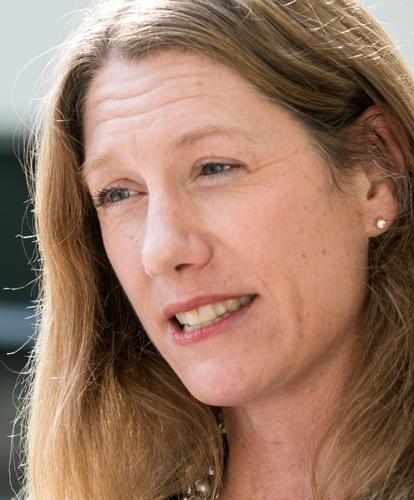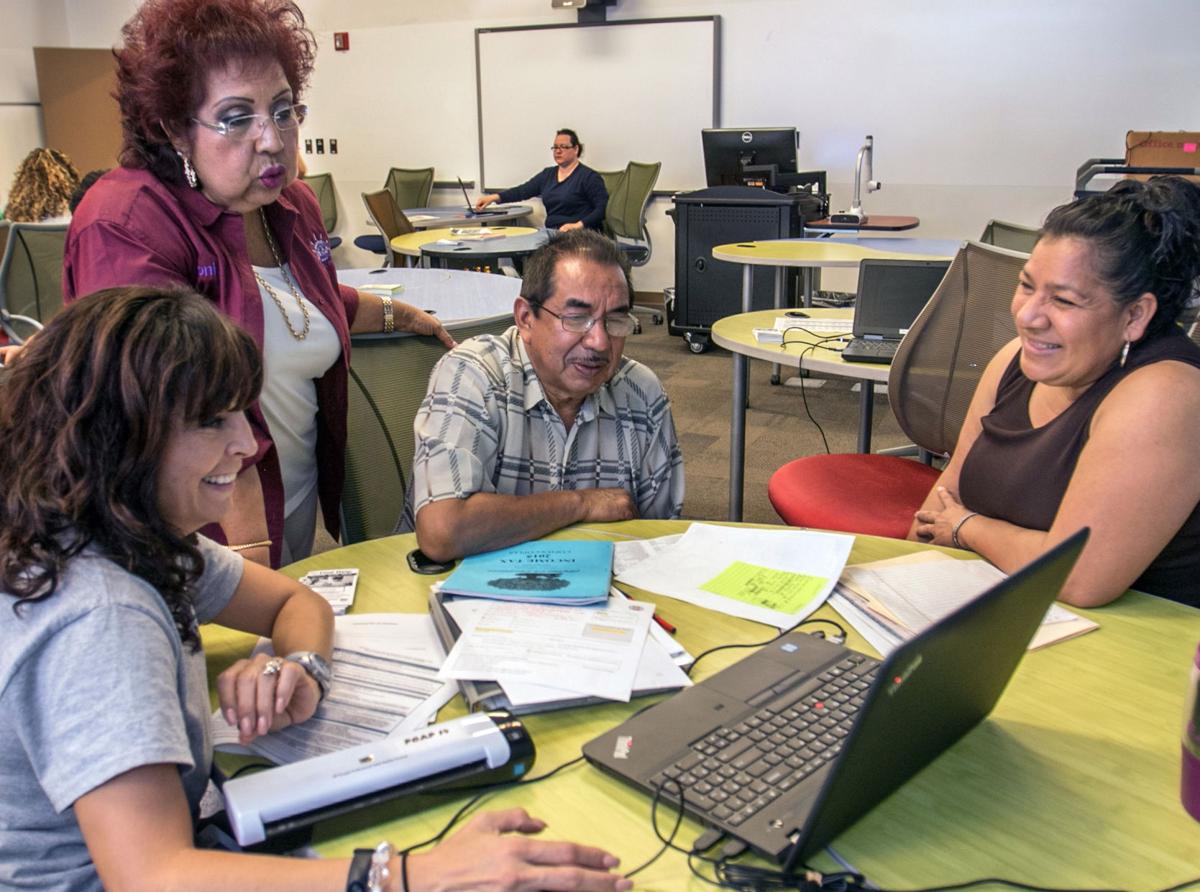Pima County residents buying insurance on the federal marketplace don’t have to worry about being indecisive. There’s almost no choice.
Missouri-based Centene Corp., under the name Ambetter, is the only company offering plans to all age groups. Blue Cross Blue Shield of Arizona is selling plans to Pima County residents, but only so-called “catastrophic” plans to people under 30.
Open enrollment to buy health insurance for the 2017 calendar year with federal subsidies made available via the Affordable Care Act began Tuesday, Nov. 1, and goes through Jan. 31. Consumers must enroll by Dec. 15 for coverage that begins Jan. 1.
While most headlines have focused on increased prices on this year’s marketplace, Tucson insurance broker Raymond Magnuson says the biggest problem he sees is narrow networks that are forcing people to switch primary-care doctors and in some cases lose the specialists they are seeing.
“Anything with Banner, St. Mary’s, St. Joe’s, is out of network. Cost is an issue, but the big problem this year is access to physicians,” said Magnuson, who owns Magnuson & Associates.
“If you have got cancer, chronic illness or a disease, it is better than nothing. But put yourself in their shoes. It’s all about access. Is that when you want to be changing physicians, when you have chronic illness or disease treatments?” he asked.
Working-age insurance
Affordable Care Act insurance on the marketplace is for working-age Americans and should not be confused with open enrollment for Medicare, which began Oct. 15.
The marketplaces are where consumers may buy private insurance and qualify for federal subsidies to help pay for it if they are eligible. Many people refer to the insurance available on the marketplace as Obamacare.
The fourth open enrollment season for the marketplace, created by the Affordable Care Act, is looking much different than the first when there were seven insurers offering more than 100 plans for Pima County consumers.
All the plans being offered this season are HMOs, which means consumers must use in-network providers or face higher out-of-network costs. The exception is if the service is not offered anywhere in network and is necessary. The burden is on the consumer to show that’s true.
One issue of concern to some consumers is that Banner Health, which owns two local hospitals, is not in any of the networks being offered on this year’s marketplace for Pima County. Nor is the Carondelet Health Network, which also operates two local hospitals.
Not for everyone
Federal officials and advocates for the uninsured are asking consumers to explore their options and to not get scared off by headlines, as they stress the importance of getting covered.
It is also important to note that most Americans get their health insurance via their employer or a government program, and a minority need to buy it through the individual marketplace, which is also sometimes called the health insurance exchange. Some states have set up their own exchanges. Arizona uses the federal exchange.
Last year, for example, nearly 180,000 Arizona residents (including 31,161 Pima County residents) purchased plans on the federal health insurance marketplace and three quarters of them qualified for federal subsidies to help pay the cost.
The number of Arizonans on Medicaid, in contrast, is 1.9 million people, including 289,710 Pima County residents. Arizona’s Medicaid program is called the Arizona Health Care Cost Containment System (AHCCCS).
Rate hikes
An Associated Press analysis recently found that Arizona’s marketplace premiums went up by 116 percent this year, but federal officials say that not all health-insurance consumers are going to see that kind of price increase.
“Our message to consumers is to come find out what your options are and see what financial assistance might be available to you to help pay for the monthly cost of premiums,” said Melissa Stafford Jones, regional director for the U.S. Department of Health and Human Services, who helped kick off an enrollment event at Pima Community College’s downtown campus on Tuesday.
“We know that many uninsured adults assume that coverage is not affordable. But a lot of what is discussed in the public domain is the sticker price of health insurance and it doesn’t factor in that financial assistance is available that helps consumers pay for the cost,” she said.
Avoid assumptions
Advocacy organizations say Arizonans should not jump to assumptions and should take advantage of the cost-free help that’s available to explore their options.
“Our general position is that consumers always benefit when there are multiple options,” said Diane E. Brown, executive director of the Arizona Public Interest Research Group.
“That said, it’s important to recognize more than 400,000 Arizonans now have insurance due to the Affordable Care Act. ... Just because an individual may not have qualified for financial assistance in the past doesn’t mean they won’t this enrollment period,” Brown said.
Indeed, health-care “navigators” and enrollment assisters aim to help people get insurance coverage, whether it’s through Medicaid, KidsCare, Medicare, the marketplace or privately. There’s a toll-free number for Pima County residents to schedule free appointments — 1-800-377-3536 — or they can sign up for an appointment online at coveraz.org/connector
One of the first people with an appointment at an open-enrollment event at PCC’s downtown campus Tuesday was Hannah Nielsen, who has been without insurance for about a month, when she turned 26. She’d been on her parents’ insurance until then.
In order to stay on her parents’ insurance, Nielsen was looking at paying $500 per month. She met with an enrollment assister to explore other options. Nielsen is studying to be a dental hygienist and does not have other income. It’s possible she will qualify for AHCCCS.
“I’ve never had to get insurance for myself before,” she said.
Cancer without insurance
One of the points that often gets lost in political discussions of the Affordable Care Act is that it wasn’t just about subsidized health insurance. It’s about getting affordable coverage for all Americans.
Hector Bandin was diagnosed with oral cancer in 2010, the year Congress passed the Affordable Care Act. At the time he was working as a waiter and living in Page, Arizona.
Due to Arizona budget cuts, single childless Arizonans were not eligible for AHCCCS at the time, and Bandin did not have any other insurance. He racked up $80,000 in medical bills he could not afford to pay.
“I was running into a brick wall,” said Bandin, who is 37. “And I could hardly speak at the time, I had a tumor in my mouth. It was a lot of stress.”
After “a lot of digging,” Bandin discovered he could ask for debt forgiveness from the hospital. Flagstaff Medical Center said yes, but Bandin said the process was long and emotional.
In 2014, Arizona expanded its AHCCCS program through the Affordable Care Act and at the same time restored childless adults to the program. Bandin is now enrolled in AHCCCS and is a student at PCC, with intent to transfer to the University of Arizona.
He met with enrollment specialists on Tuesday to confirm his insurance options.
The Affordable Care Act allowed Americans to stay on their parents’ health insurance until the age of 26; prevented companies from rejecting people from coverage due to pre-existing conditions; and allowed many states, including Arizona, to expand their Medicaid programs through added federal funding. In addition, women can no longer be charged more than men for health insurance.
Penalties
The Affordable Care Act seeks to have as many people insured as possible, which is why there are fines for people who are uninsured — 2.5 percent of one’s income, or $695 per adult and $347.50 per child, to a maximum of $2,085.
However, there are certain scenarios where people can apply for a hardship exemption and avoid penalties for not having coverage.
Since October 2013, the uninsured rate in Pima County has dropped from 17 percent to 10 percent, the Pima County Health Department says.
Stafford Jones says people who weren’t eligible for financial assistance last enrollment season might want to check again, at the healthcare.gov website. The site now allows consumers to “window-shop” for plans and compare prices without purchasing anything.
She cited federal data that show an estimated 33,000 Arizonans who are buying private insurance off of the marketplace may be able to lower their monthly premiums because they qualify for subsidies.
“We really want to make sure that consumers know that every county in Arizona has a health plan that is available to them through the marketplace,” Stafford Jones said.
“We are in the fourth open enrollment — the fourth year, which is still relatively young for a marketplace. We expect that we will continue to see insurers coming in and out as the marketplace evolves and matures. We will continue to work on stabilizing the marketplace and working with all of the stakeholders,” she said.







